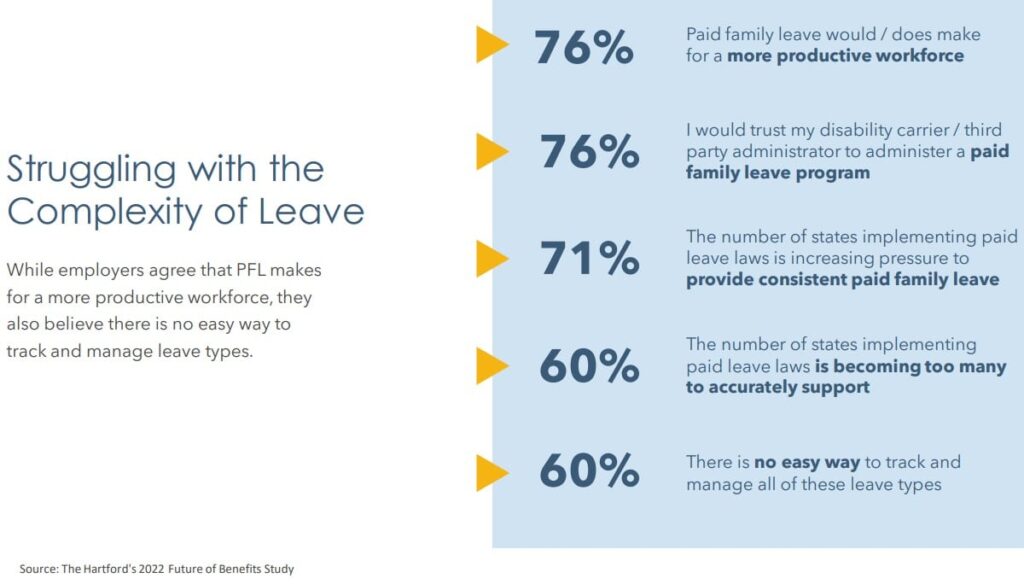Developing and administering a leave program is complex, not to mention time-consuming as they require wading through myriad state, national and international compliance regulations.
And as tempting as it is to outsource a leave program to a third-party administrator, it’s a mistake to assume you’ve completely washed your hands from the process once you sign the contract, experts say.
“It’s a partnership,” says Megan Holstein, head of absence management and vice president with the group benefits division of The Hartford Group. Holstein spoke last week on “Leave Management: Is Co-Sourcing the New Outsourcing” at the Health & Benefits Leadership Conference in Las Vegas. “You don’t want to throw it over the fence and think you are done because you will lose information about your organization.”
The reason employers need to remain involved with their leave program is that they still own the program’s strategy, data and workplace culture and they need to share this information and views with their outsourcing partner, Holstein says.
As a result, outsourcing leave is actually more about co-sourcing them, says Holstein.
Why outsourcing leave is growing
One of the first areas of employer leave programs to be outsourced was the administration of compliance, says Karen Raftery, regional vice president of group benefits at The Hartford Group, during the session on co-sourcing leave programs.
While the vast majority of 501 employers surveyed in The Hartford’s 2022 Future of Benefits Study agreed that providing paid leave makes for a more productive workforce, the same employers also reported that they overwhelmingly found it difficult to track and manage the various leave types their employees were taking.
“There is no easy button to push. There are multiple laws, multiple policies,” says Raftery. “And all the employee cares about is, will I be paid if I take leave and is my job secure.”

Building a checklist to embrace co-sourcing for leave programs
One of the first steps is to think of the various pieces of your leave landscape, such as paid time off, paid and unpaid FMLA, short-term disability, long-term disability, paternity and maternity leave, pet-related leave, bereavement leave and other types of leaves that you provide, says Raftery.
“Can you build a consistent process for your leave? Do you have a compliant process? Think of these pieces of the puzzle and these questions, then make sure your managers have training and understand these puzzle pieces,” Raftery says.
When meeting with your outsourcing partner, come to the table to learn about potential strategic initiatives and policy trends, then consider some tweaks that may arise as your outsourcing partner administers your leave program, Holstein says.
One important aspect to take to heart when building your leave program with your outsourcing partner? “We have a saying in our industry that when you see one medical paid leave law, you have seen one medical paid leave law,” Holstein adds. “They are all so different.”



